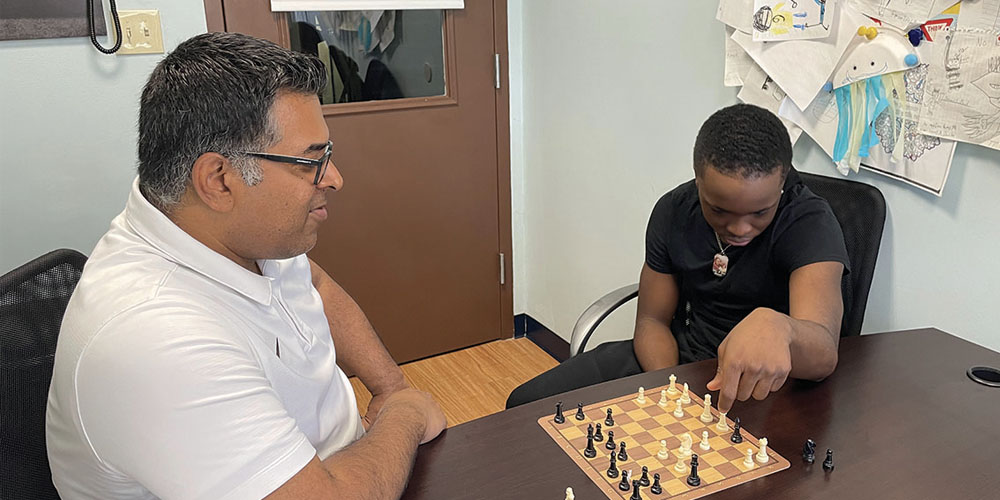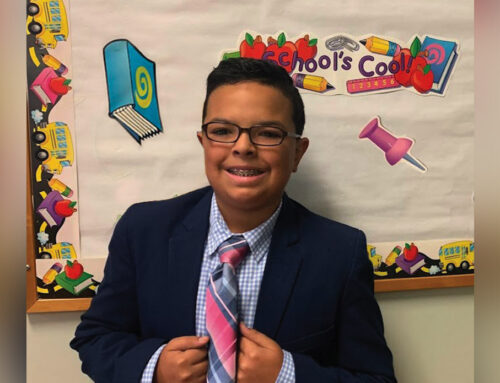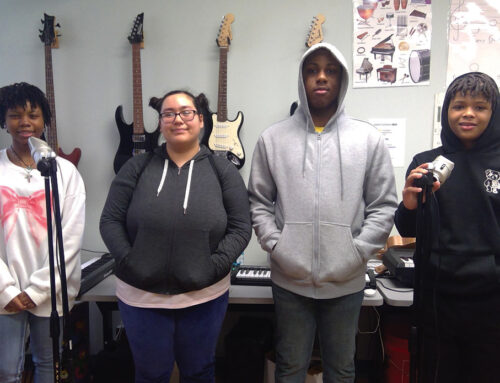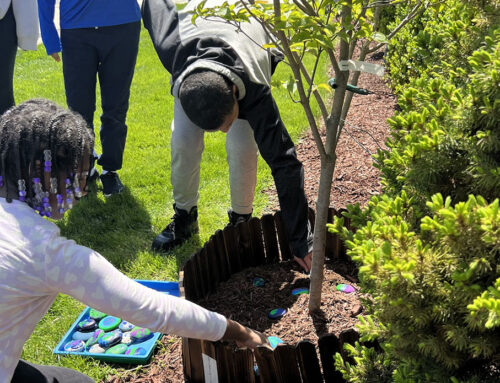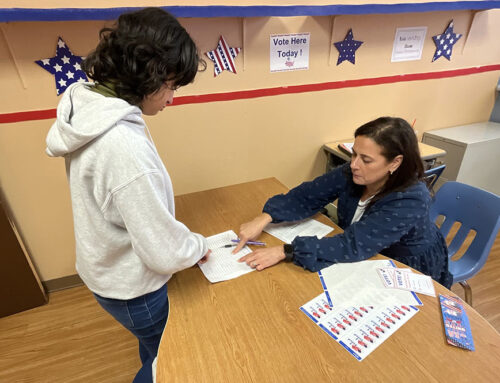By Abe Mathew, Principal
Inspired by the popular Netflix series, The Queen’s Gambit, I started playing chess with one of my students, “Joe.” He often seeks my advice. When he noticed the chess board in my office, he asked to play.
Joe surprised me. It only took fifteen moves before he took my king and forced me to resign, but during that game and since, a lot happened. Word got out. Now, five students play chess with me on a regular basis.
As a principal, I am always looking for ways to connect with my students. Chess is ideal. It holds space for communication. Students may start by talking about hobbies, home life, and school but as they let down their guard, the conversation becomes more authentic. Chess helps students who struggle with cause and effect as they learn to predict outcomes of their moves, and adjust for unexpected obstacles.
Chess allows learners to play to their strengths: visual and spatial learners see the board in their mind; audio learners listen to music while playing; and tactile learners touch each piece as they contemplate their next move.
Chess requires students to learn and follow rules. It can help them decrease impulsive responses; moving too quickly or without a plan can end the game fast. Chess teaches patience and turn-taking; while your opponent is considering the board, the other player must sit quietly. And like all games, chess gives us the opportunity to lose graciously and win modestly.
I have yet to get a re-match with Joe. Chess is a game of strategy and patience, so I will wait for the right time to make my next move.




